 The Pitta dosha is characterized by light, hot, fluid, oily, and intense. The elements of Fire and Water comprise the Pitta dosha. The energetic force Pitta generates facilitates internal bodily activities like digestion, absorption, assimilation, and body temperature regulation. It stimulates digestion so that the nutrients are broken down and transformed into necessary energy for cellular functioning. The word Pitta literally translates into “that which cooks.” Some of the physical attributes of Pitta are visible in oily skin, bright eyes, and average weight. Pitta is easily disturbed in hot weather and requires cooler temperatures to thrive.
The Pitta dosha is characterized by light, hot, fluid, oily, and intense. The elements of Fire and Water comprise the Pitta dosha. The energetic force Pitta generates facilitates internal bodily activities like digestion, absorption, assimilation, and body temperature regulation. It stimulates digestion so that the nutrients are broken down and transformed into necessary energy for cellular functioning. The word Pitta literally translates into “that which cooks.” Some of the physical attributes of Pitta are visible in oily skin, bright eyes, and average weight. Pitta is easily disturbed in hot weather and requires cooler temperatures to thrive.
Pitta-Centric People
People with Pitta as their major dosha tend to perspire a lot, even during the winter months. Pitta energy is known to govern the skin, eyes, liver, small intestine, and brain. When the Pitta energy is in balance, it promotes understanding and intelligence.
Pitta Dosha Imbalanced
Pitta imbalances occur when there is an excess of the dosha present within you. Some of the common ailments that can manifest due to Pitta imbalance are bleeding disorders, heartburn, fever, inflammation, migraine, and rashes. From a psychological standpoint, Pitta imbalances result in feelings of hatred, anger, jealousy, and fear.
Yoga For Balancing Pitta Dosha
Practicing appropriate Pitta-balancing yoga asanas can pacify the dominant dosha and prevent aggravating symptoms. Integrating Ayurvedic means into yoga practices helps in free movement and proper digestion and has a soothing effect on the nervous system. Yoga asanas have multiple positive impacts on the human body, like regulating the removal of waste and toxins, a calming effect, and the building of self-awareness. Here are some guidelines to follow for balancing your Pitta dosha:
- Eat cool and non-spicy food.
- Work out during the cooler part of the day.
- Limit salt intake.
- Avoiding excessive oil, heat, and steam.
As the Pitta dosha’s natural influence is hot and intense, it demands a balancing yoga routine that is cool and calming. So, the asanas should facilitate slow and fluid movement. Since the Pitta is concentrated in the abdominal region, here are certain areas to focus on for balancing Pitta:
- Poses that focus on stretching and strengthening the abdominal muscles.
- Twisting and bending poses.
- Breathing exercises to promote relaxation and generate self-awareness.
Implementing the meditative aspect of yoga is essential for countering the compulsive nature of the Pitta dosha. People with Pitta as their major dosha are usually impulsive and competitive. Hence, a lower-intensity yoga routine and cooling yoga poses are likely to fit them the best.
 Yoga Poses for Pacifying Pitta
Yoga Poses for Pacifying Pitta
Imbalance in Pitta causes emotional stress, leading to several unwanted feelings like grief, anger, and jealousy. In turn, this can make Pitta-centric people prone to mental disabilities. It also affects your health and general well-being when not taken care of. Here are some essential yoga poses to bring your Pitta back to balance and ensure a healthy mind and body:
-
Child’s Pose
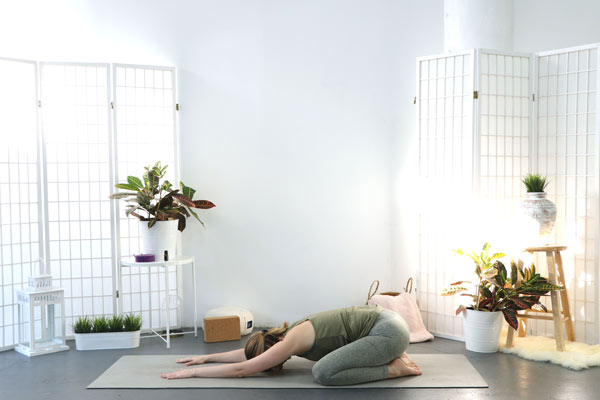 As the Pitta dosha is primarily focused on the abdominal region, practicing the Child’s pose can have several benefits for your overall Pitta health. One of the primary benefits includes the release of tension from the back, chest, and shoulders. The pose also helps in eliminating fatigue, stress, and anxiety. Child’s Pose keeps the internal organs flexible while stretching and lengthening the spine. It encourages steady breathing, calms the body and mind, and regulates circulation throughout the body.
As the Pitta dosha is primarily focused on the abdominal region, practicing the Child’s pose can have several benefits for your overall Pitta health. One of the primary benefits includes the release of tension from the back, chest, and shoulders. The pose also helps in eliminating fatigue, stress, and anxiety. Child’s Pose keeps the internal organs flexible while stretching and lengthening the spine. It encourages steady breathing, calms the body and mind, and regulates circulation throughout the body.
-
Cobra Pose
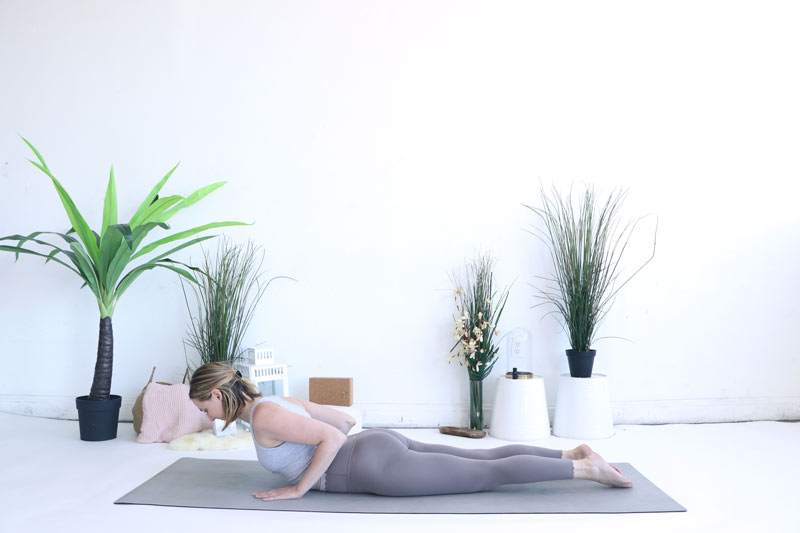 Cobra pose is a back-bending pose that helps a great deal in balancing the Pitta dosha. Make sure that the body is warmed up before attempting a back-bending pose. Practicing this pose has many benefits, including strengthening the spine and stretching the shoulders, chest, lungs, and abdomen. It also increases blood circulation, relieves fatigue and stress, and improves the reproductive system’s functioning.
Cobra pose is a back-bending pose that helps a great deal in balancing the Pitta dosha. Make sure that the body is warmed up before attempting a back-bending pose. Practicing this pose has many benefits, including strengthening the spine and stretching the shoulders, chest, lungs, and abdomen. It also increases blood circulation, relieves fatigue and stress, and improves the reproductive system’s functioning.
-
Bridge Pose
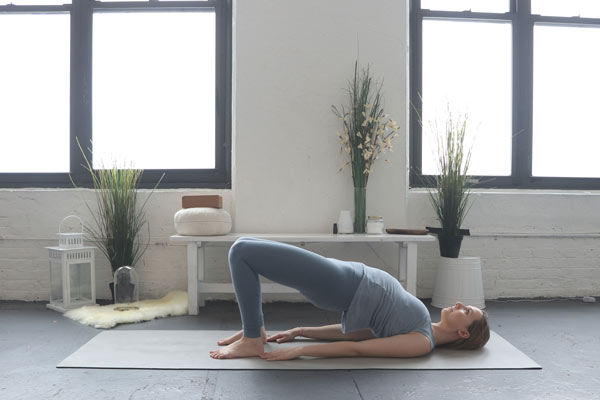 Regularly practicing Bridge pose makes the mind and body more alert. It is one of the many important poses that pacify the Pitta dosha in your body. Some of the recognized benefits of practicing the pose are stretching and strengthening the spine, neck, chest, hips, back, and hamstrings. It also calms the central nervous system and improves blood circulation. Practicing the pose helps in stimulating the abdominal organs, thyroid glands and improves digestion as well. The pose is therapeutic for sinusitis and hypertension as well.
Regularly practicing Bridge pose makes the mind and body more alert. It is one of the many important poses that pacify the Pitta dosha in your body. Some of the recognized benefits of practicing the pose are stretching and strengthening the spine, neck, chest, hips, back, and hamstrings. It also calms the central nervous system and improves blood circulation. Practicing the pose helps in stimulating the abdominal organs, thyroid glands and improves digestion as well. The pose is therapeutic for sinusitis and hypertension as well.
-
Seated Forward Bend
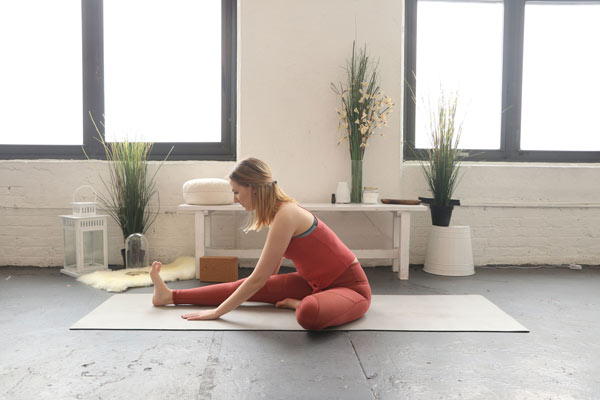 This is one of the many poses that may look easy and is so, up to an extent. However, it should not be forced under certain circumstances. The pose helps balance the Pitta dosha and includes several benefits like calming the brain and relieving mild depression. Practicing Forward Bend stimulates abdominal organs like kidneys, liver, uterus, and ovaries while improving digestive abilities. It also lowers anxiety and helps in curing certain diseases, reducing obesity, and increasing appetite.
This is one of the many poses that may look easy and is so, up to an extent. However, it should not be forced under certain circumstances. The pose helps balance the Pitta dosha and includes several benefits like calming the brain and relieving mild depression. Practicing Forward Bend stimulates abdominal organs like kidneys, liver, uterus, and ovaries while improving digestive abilities. It also lowers anxiety and helps in curing certain diseases, reducing obesity, and increasing appetite.
-
Shoulder Stand
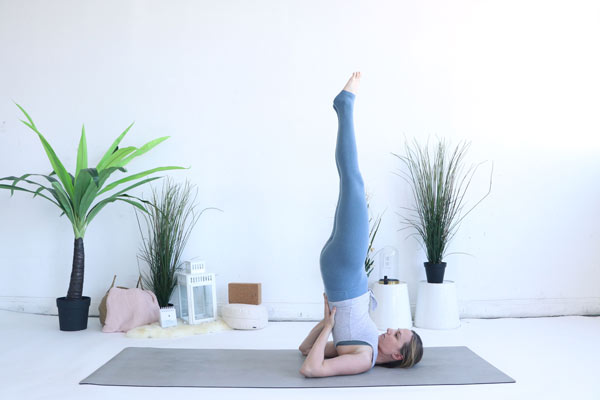 Ironically, the Sanskrit translation of this pose means “full-body pose” because it benefits the whole body. Practicing this yoga pose brings balance to your imbalanced Pitta and provides health benefits like improved digestion, reduced strain on the heart, a stronger immune system, and higher self-confidence. It also supports the nervous system and strengthens the upper body. Apart from these, it helps in maintaining body posture.
Ironically, the Sanskrit translation of this pose means “full-body pose” because it benefits the whole body. Practicing this yoga pose brings balance to your imbalanced Pitta and provides health benefits like improved digestion, reduced strain on the heart, a stronger immune system, and higher self-confidence. It also supports the nervous system and strengthens the upper body. Apart from these, it helps in maintaining body posture.
-
Corpse Pose
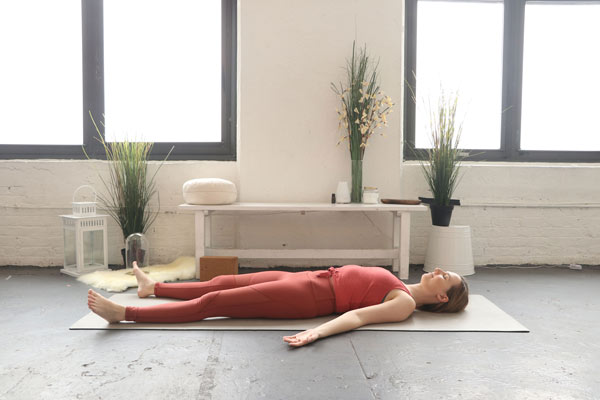 This is one of the most lightweight yoga practices that help in generating self-awareness. It clears your conscience while helping you calm down and relax. Corpse pose is beneficial in pacifying the Pitta dosha. Some of the benefits include reducing anxiety and stress while calming the central nervous system. Practicing the pose also helps in the functionality of the digestive and immune systems. It helps build awareness and assists in lowering blood pressure.
This is one of the most lightweight yoga practices that help in generating self-awareness. It clears your conscience while helping you calm down and relax. Corpse pose is beneficial in pacifying the Pitta dosha. Some of the benefits include reducing anxiety and stress while calming the central nervous system. Practicing the pose also helps in the functionality of the digestive and immune systems. It helps build awareness and assists in lowering blood pressure.
Healthy Pitta For a Healthy You
Pitta imbalance in your body requires an Ayurvedic approach, including appropriate yoga poses, to bring back proper balance to the body. Practicing the aforementioned poses regularly can help you become more aware and comfortable in your own skin and thereby live a happy, healthy life.
